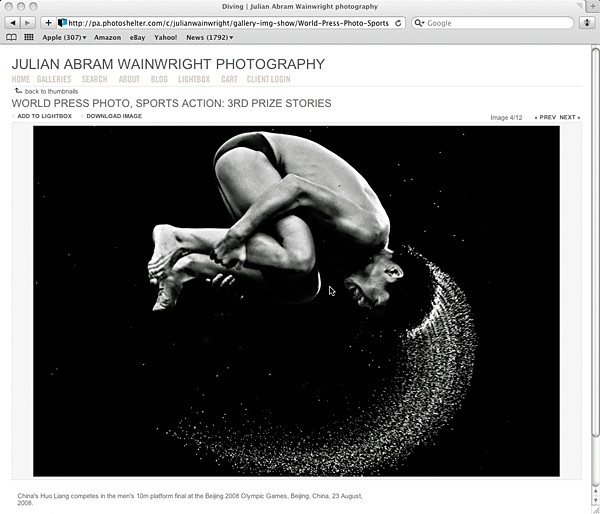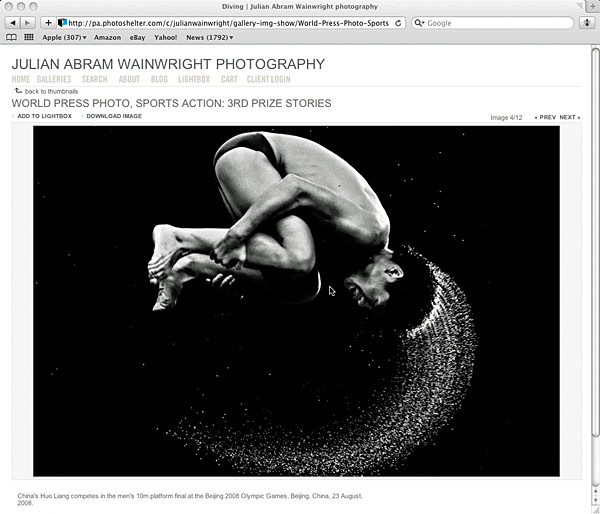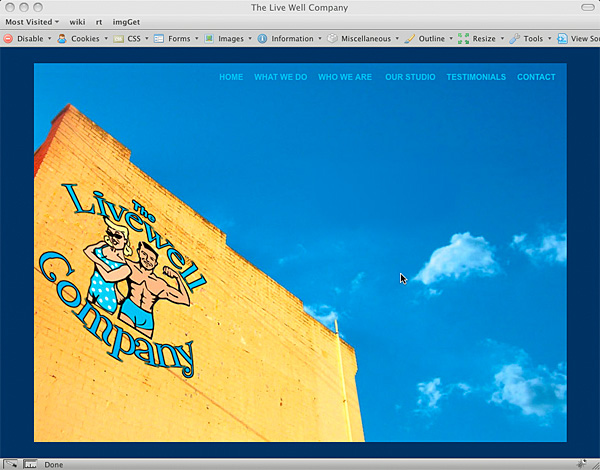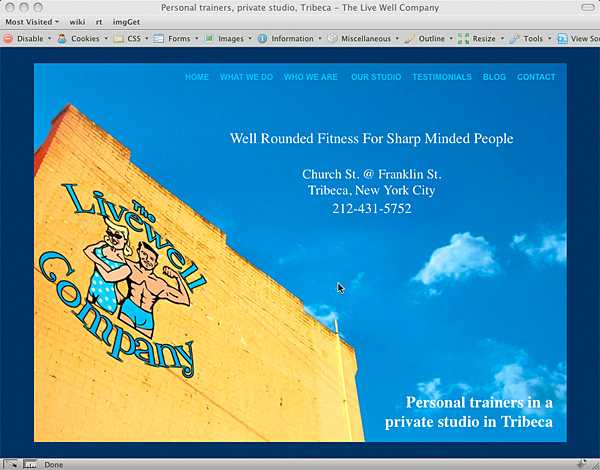Share
Is Your Web Designer Full of Crap?
Back in the 90s, when website design was still a novelty, we used to hire designers based on who could make our websites the prettiest. There were ...

Back in the 90s, when website design was still a novelty, we used to hire designers based on who could make our websites the prettiest. There were so few websites and digital photography didn’t exist yet, so getting a photography website together always created a lot of buzz. But times have changed, and grabbing someone’s attention to view your photos is much harder. The Internet has evolved significantly, and websites need to reflect that changing reality.
It’s still commonplace to see threads on various photography websites asking “who should I use to design my website?” And unfortunately, it’s still common for photographers to spend $10,000 or more to get a “unique” design, or on the flipside, to go totally budget with a $50 solution thinking that all solutions are the same.

Julian Wainwright’s PhotoShelter-powered photography website
We’ve often found that there is a major disconnect between a designer’s vision, and the realities of what the audience wants.
But let’s step back for a moment and discuss the goal of a photography website.
A photography website used to be a digital brochure. It used to be the digital version of the portfolio books that we lugged around. But that time has passed. The rise of Google (and the other search engines) combined with the rapidity of information exchange through mechanisms like blogs and other social media sites, means that your website represents much more than just a place to electronically store your photos. So what’s the goal of a photography website? I assure you that it’s not just to show people images.
Your website design isn’t just for people who visit it. The fundamental construction of the website can help attract visitors even if they don’t know who you are.
You’re probably asking what this has to do with the taupe color and typeface that your designer picked out for you. A website designer who only concerns him/herself with the appearance of the website is like hiring a house painter to design and build your home in a hurricane zone. Can they do it? Sure, they can build you something, but it wont’ be fundamentally sound, and it won’t help you accomplish your goals.
You might be satisfied to drive traffic to your website through traditional marketing techniques alone (e.g. post cards), but you would be missing out on the free lead generation that the Internet can help provide. The goal of your website shouldn’t be limited to display of your images. This, of course, is important. But a website can do so much more by attracting people that don’t even know you exist.
The fact of the matter is that many photography websites, whether they are aware of it or not, get 30-50% of their traffic from search engines. You might think that your website visitors know your URL and are typing it in to their browser, but this flies in the face of evidence.
I still don’t follow you. My name comes up first in Google.
If you search for your name in Google, and your website comes up first, you’re missing the point. If someone already knows your name, then they probably know how to find you. But the well-designed website can attract people who don’t even know you.
Let’s say you’re a wedding and events photographer in New York. Tons of photographers fall into that category, but only 10 show up on the first google search results page for “wedding photographer New York.” When people want to find something that they may not know much about, they go to Google. So you need to be optimized for the terms that they are going to search for. Get it?
How SEO Savvy is your designer?
Search Engine Optimization (SEO) is a technique that helps your photography website rank higher in searches on Google and other major search engines. The better your ranking for specific keywords, the more likely that you are to drive traffic to your website, which leads to more potential new business.
For example, I use a personal trainer because I’m too lazy to go exercise on my own. My trainers, Darryl and Anne Marie, have a website, and when I saw it, I realized there was a lot of opportunity to make simple improvements. Here is what their homepage looked like before.

A big splash image, which is nice, but all the stuff I want to know if buried. Also, the page title (which is the most important on-page SEO factor) just had their name. So I suggested that they:
– Alter the page title to be descriptive
– Put some text on the homepage that explained what they did
– Insert a “meta” description into the homepage.
Being that they are sole proprietors of a small business, it’s unlikely that the average person knows who they are. But if I’m looking for a personal trainer in TriBeCa (the neighborhood where I live), then I’m apt to type in “tribeca personal trainer” into Google.
With the old website, they appeared on page 5 of the search engine results page (SERP), where no one would realistically find them. Here’s what the website looks like after we made some basic changes.

Within about a week, Google reindexed the page, and now they appear on the 1st page in the 6th position for “tribeca personal trainer”. And then just last week, Darryl told me that they just signed up a new client that found them on Google while searching for “tribeca personal trainer.” Minor changes made a huge difference in their search results placement, which led to additional revenue.
So that’s real life proof that SEO can reap real benefits when integrated with website design. The other obvious item that should be pointed out, is that I shouldn’t have to search for how to contact a business. Why put contact information on a contact page? Why not put it on the homepage? But I digress.
SEO factors are precisely what a savvy designer needs to be aware of before they build a website. In fact, it’s arguable that in this day an age, a designer without knowledge of SEO is not doing their job. In reviewing their past work, use the following checklist to determine their SEO awareness.
– Does every page in the website have a different page title?
– Does every page have a unique URL (many Flash-websites have a single, shared URL for every page)
– Do the names of the galleries appear in the URL?
– Do captions and keywords appear as text (not graphics) on the pages?
– When you view the source code of the page, do you see a <meta name=”description”>?
– Does a description of the photographer’s work and services appear on the homepage?
– Does the website include an about page with text? (Many Flash-based sites use an image)
– Do images have an ALT tag which tells Google what is depicted in the image?
– Have they installed Google Analytics into the website?
– Have they registered a “sitemap” with Google Webmaster?
The same questions can be posed to your website software provider. So many photography website vendors focus purely on the presentation of images, but they are missing half of the marketing game.
You can learn a lot more about SEO by checking out our SEO Toolkit for photography websites.


